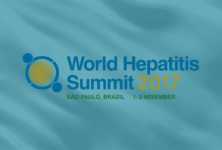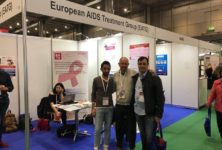New data released for New York, show that this major city with high HIV prevalence – approximately 120,000 HIV positive people currently live in the city – is steadily reducing the number of new infections. [1]
New York is also significant for setting targets for reducing new infections, as part of an ambitious new programme that includes reducing late diagnosis and easy access to both PrEP and PEP. This strategy includes a target to reduce new infections by 75% by 2020. [2]
In 2015, there were 2,493 new HIV diagnoses and 1,307 new AIDS diagnoses in the city. At the end of 2015, 121,616 people had been diagnosed with HIV/AIDS and were presumed to be living. In 2015, there were 1,678 deaths among people with HIV.
From 2001 to 2015, the number of new HIV diagnoses significantly decreased overall and by gender, race/ethnicity, age at diagnosis, borough of residence, and transmission risk (p <0.01 for all subgroups except transgender people, Asian/Pacific Islanders, MSM, and transgender people with sexual contact. Although approximately 60% of new diagnoses are in MSM (1450/2493), the absolute numbers have significantly and steadily fallen over the last eight years (2007-2015).
Area-based poverty levels appear to strongly correlate with new diagnosis: with 188, 698, 594 and 735 diagnoses in areas with low, medium, high and very high poverty levels, respectively. However, some of the highest HIV incidence levels were report for high-income areas
This report includes graphic trends in HIV diagnoses over time for key populations, maps displaying the distribution of HIV, and measures of specific key outcomes such as linkage to care, viral suppression, and mortality among people with HIV (PWH).
New features include data by gender instead of sex at birth, a section focused on HIV among African/American and Latino/Hispanic people, data on Hepatitis C infection, and a comparison of select characteristics among newly diagnosed men who have sex with men and transgender women.
The executive summary highlights:
- For the first time in the history of the NYC epidemic, the annual number of new HIV diagnoses dropped below 2,500, to 2,493 in 2015 (8.3% decline from 2014).
- New HIV diagnoses among men who have sex with men and among women both declined substantially in 2015 (a 10.5% decline and an 8% decline from 2014, respectively). Also in 2015, the number of new HIV diagnoses among people aged 20– 29 reached a significant new low since 2001.
- There were no HIV infections diagnosed among infants born in NYC in 2015, a major achievement within the overall elimination of mother‐to‐child‐transmission of HIV.
- The all‐cause mortality rate and rate of HIV‐related deaths among people living with HIV have continued to fall dramatically since 2001.
- The proportion of people in HIV care who achieved viral suppression increased in 2015 (83% compared to 81% in 2014).
Overall in 2015, 71% of new diagnoses led to timely linkage to care, and 83% of people on ART had viral suppression (<200 copies/mL).
However, disparities by gender, race/ethnicity, HIV transmission risk, geography, and area‐based poverty level persist. African/Americans continue to be disproportionately affected by HIV. In 2015, 42% of all newly diagnosed HIV infections in NYC were among African/Americans who comprise only 22% of the city’s population. Outcomes including HIV diagnosis rates, short‐term survival after HIV diagnosis, and viral suppression among PWH in care were also worse for Black and Latino/Hispanic people with HIV.
Differences in linkage to care and viral suppression were reported by some demographics including race, sex, gender and transmission risk.
Co‐infection with Hepatitis C virus (HCV) is significant. Among PWH in care, only just over half (58%) had recently been screened for HCV, but 12% of those tested had a recent positive result.
Comment
This report is important as an example of a healthcare approach to HIV that sets hard targets to reducing new infections.
Even though these data are optimistic, the impact of the new End the Epidemic (EtE) programme will not be seen until next year. However, rates of decline are not yet steep enough to reach 2020 targets.
Unfortunately, the UK has consistently failed to set targets and over the same 15-year period, HIV incidence in the UK has remained unchanged – despite high levels of access to treatment and high rates of viral suppression in people on ART. [3]
Although there are significant differences between New York and the UK, some of the similarities are important. The city actually has more people living with HIV as the whole of the UK; both countries are high-income settings with a public health infrastructure; and both have excellent surveillance data that makes it possible to evaluate the impact of health interventions.
The widespread availability of PrEP in NYC as an option for all populations at high risk is one significant difference. This is in contrast to the recent decision by NHS England to delay PrEP access for years. [4]
In NYC, PrEP is widely advertised in the city as a public health issue, including on public transport.
By Simon Collins
References
- NYC Department of Health and Mental Hygiene. HIV Surveillance Annual Report, 2015.
http://www1.nyc.gov/site/doh/data/data-sets/hiv-aids-surveillance-and-epidemiology-reports.page http://www1.nyc.gov/assets/doh/downloads/pdf/dires/hiv-surveillance-annualreport-2015.pdf (PDF) - New York State Department of Health. 2015 Blueprint to End the AIDS Epidemic, State of New York: Albany, NY. March 2015.
http://www.health.ny.gov/diseases/aids/ending_the_epidemic/#blueprint - Public Health England. HIV diagnoses, late diagnoses and numbers accessing treatment and care. HIV official statistics overview: 2016. PHE publications gateway number: 2016349.
https://www.gov.uk/government/statistics/hiv-annual-data-tables - NHS England announces major extension of national HIV prevention pregramme [sic] with public health england [sic] and funding for ten new specialised treatments. 4 December 2016: 00:01 am).
https://www.england.nhs.uk/2016/12/hiv-prevention-pregramme


 ПОИСК ПО САЙТУ
ПОИСК ПО САЙТУ  поиск по ресурсному центру
поиск по ресурсному центру 



